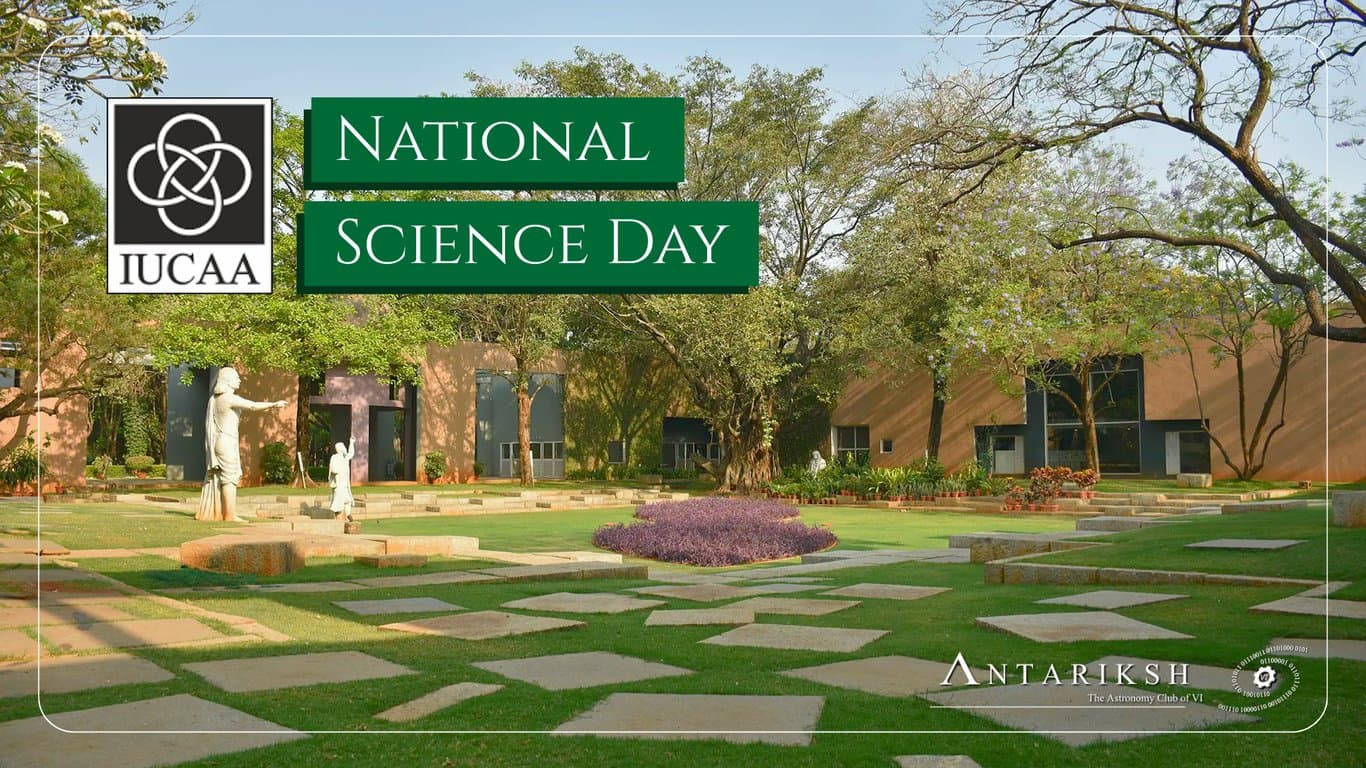
On February 28, 2024, celebrated as National Science Day in India, the Inter-University Center of Astronomy and Astrophysics IUCAA, Pune, India held an open house for the public for multiple initiatives and demonstrations. A diverse array of individuals from various backgrounds and age groups were attracted to different initiatives such as Cosmic Ray Muon Detector, Antenna Trainer Kit, S.U.I.T. of Aditya L1, Horn Antenna. One such demonstration was Faraday Rotation Effect, presented in the TLC (Teaching and Learning Centre) Main Building with a complete experimental setup. The demonstration was conducted by Jiya Mokalkar , Saee Mahajan and Sayali Chakre , under the expert guidance of Jameer Manur . In this report we will overview the demonstration conducted at IUCAA during the national science day open house.
Introduction
Micheal Faraday (1791 - 1867) was an english scientist who worked majorly in the field of electromagnetism and electrochemistry, earning him the title father of electricity. In his quest to understand the behavior and interaction of light with the world around us, after months of experiments and research, gave us the first experimental evidence that light and electromagnetism are related.
Faraday rotation is a magneto optic effect that involves polarized light passing through a medium in the presence of a parallel magnetic field. It is a phenomenon in which when a plane polarized light is traveling through a medium in the presence of a parallel magnetic field, its plane of polarization is changed, or in other words its plane of polarization is rotated by some angle. This angle, called the faraday rotation angle, is directly proportional to the strength of the magnetic field, the length of the medium and the verdict constant associated with that medium.

Here,
B is the magnitude of magnetic field
d is the length of the medium
V is the verdict constant
E represents the direction of the electric component of light
β is the faraday rotation angle ,
where, β = vdB
Methodology
Faraday rotation occurs when light passes a medium containing atoms or molecules with unpaired electrons, such as specific gasses or solutions, in the presence of a magnetic field perpendicular to the light's propagation direction. The interaction between this magnetic field and the magnetic dipole moments of the electrons induces a splitting of the electrons' energy levels according to the Zeeman effect.
In the material, the Zeeman effect orients electrons by affecting their magnetic spin, making energy levels split into multiple sub-levels corresponding to diverse spin orientations relative to the external magnetic field.in other words, the external magnetic field exerts a force on the electrons, aligning them either parallel or antiparallel to the magnetic field based on their spin. This alignment leads to different refractive indices for circularly polarized light.
Linearly polarized light can be conceptualized as a combination of right and left circularly polarized light. The velocities of these circular polarizations differ due to the change in refractive indices as explained above. This velocity change results in a phase difference between them, leading to the rotation of the plane of polarization.
Understood, here's how you can modify the experimental procedure to take two readings, one without the magnetic field and one with the magnetic field turned on:
Experimental Procedure:
Turn on the red laser and adjust its power supply to provide a stable output of 5mW.
Take the first reading: Measure the intensity of the laser light passing through the second polarizer without applying a magnetic field. Record this intensity reading.
Apply a magnetic field along the axis of the solenoid by passing a current through the coil. Adjust the current to generate the desired magnetic field strength.
Take the second reading: Measure the intensity of the laser light passing through the second polarizer with the magnetic field turned on. Record this intensity reading.
change the angle of the first polarizer by 5 degrees and take reading again, with and without magnetic field present.
Adjust the current or magnetic field strength to ensure stability and repeatability of the readings if necessary.
Compare the intensity readings obtained with and without the magnetic field at different angles of the first polariser to observe the Faraday rotation effect.
Draw a graph using those readings and calculate the difference in intensity between the two readings to quantify the extent of Faraday rotation.

Experimental SetUp at IUCAA:
Here are the specifications of the experimental set up used in IUCAA during the national science day open house,
Light source : Red Laser of 532 nm wavelength and 5mW supply
Solenoid :
length of solenoid = 13cm
Copper wire of diameter = 1.2mm(or 18 gauge)
wound around a plastic pipe of 15mm
Number of turns= 1309
Polarisers : Sheet polarisers (polyvinyl alcohol dyed with iodine)
Photodetector : 555 Udt-Uv
Faraday material : 5 mm TGG crystal (Tb3Ga5O12)
Observations :

Malu's Lau Observation
Conclusion
The Faraday rotation demonstration at IUCAA's National Science Day open house showcased the interaction between light and magnetism, the first experimental proof of relation between light and magnetism discovered by Micheal Faraday. Led by Jiya Mokalkar, Saee Mahajan, and Sayali Chakre, the experiment engaged audiences of diverse backgrounds and ages. The hands-on approach allowed visitors to witness firsthand the intriguing phenomenon of rotation of the plane of polarization of light. With a simple setup featuring a Red Laser, solenoid, polarizers, photodetector, and Faraday material, attendees gained insight into the world of magneto optics. IUCAA's commitment to public engagement was evident as they facilitated accessible and captivating scientific experiences for all.
Safety Precautions:
Follow safety protocols for handling lasers to prevent accidental exposure.
Handle electrical equipment with care to avoid electric shocks.
Use caution when applying currents to the solenoid to prevent injury.



